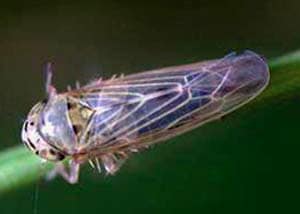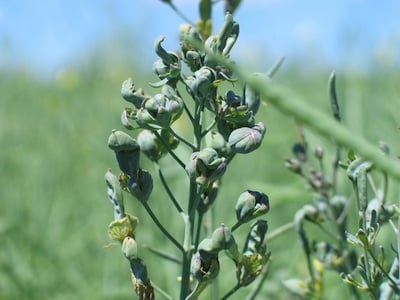

Aster leafhoppers were spotted in North Dakota, Manitoba and Saskatchewan in significant numbers this week. Leafhoppers can carry aster yellows phytoplasma, but the percentage of the population carrying it tends to be quite low. While the insect prefers to feed on cereals, they will feed on canola and carriers will transfer the phytoplasma to canola plants.
No product is registered to control aster yellows phytoplasma infection in canola and no canola has resistance. In extreme cases, growers could spray the leafhoppers, but there is no economic threshold for aster leafhoppers in canola, and trying to time an insecticide so it would be effective and economical may be difficult. Multiple sprays may be necessary. This can make economic sense for some vegetable crops. Carrot growers, for example, spray on a weekly basis for several weeks to control leafhoppers and even then they may still have some aster yellows.
In most cases, economic loss from aster yellows in canola is minimal. However, in 2007, some Prairie canola fields had 5-20% infected plants. A 10% infection rate can result in 3% to 7% misshapen seeds or no seeds at all.
Note that plants infected with aster yellows can have significant yield loss without showing any of the obvious signs of infection — such as the puffed bladder-like pods. The plant looks normal but the pods are empty.
